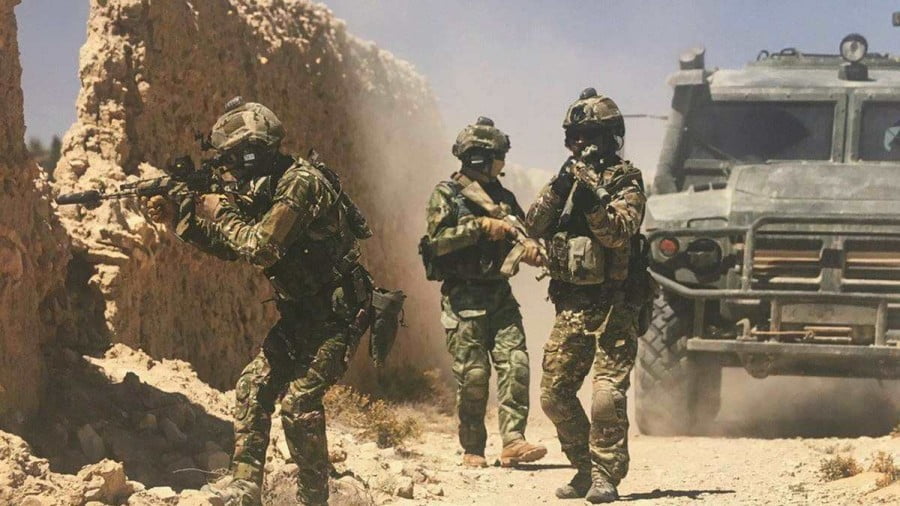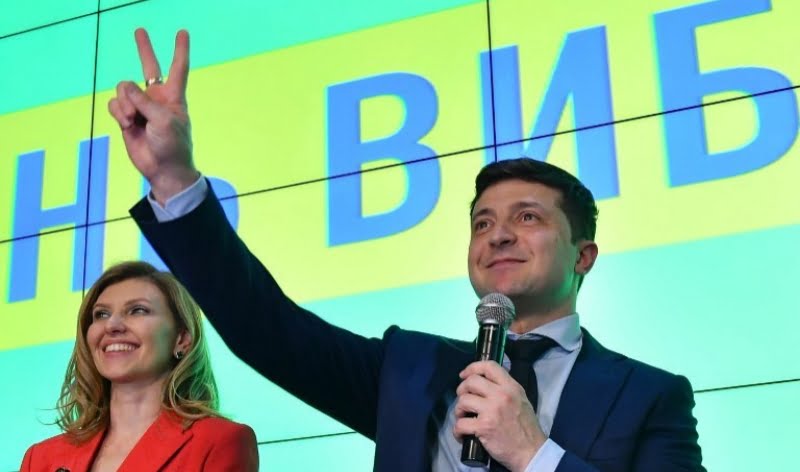The Roadmap for “Rusi-Pakistani Yaar Yaar”
Russia and Pakistan are well on the their way to reaching a strategic partnership with one another in light of four very high-profile events from the past two weeks, and sticking to the roadmap of “Rusi-Pakistani Yaar Yaar” (“Russians and Pakistanis are buddies”) could allow their relations to blossom to the point of resembling Moscow’s Soviet-era ones with New Delhi that were popularly known as “Rusi-Hindi Bhai Bhai” (“Russians and Indians are brothers”), albeit this time the Kremlin will be seeking to “balance” affairs in South Asia instead of decisively siding with one country over the other.
Four High-Profile Visits In Two Weeks
Russian-Pakistani relations are at their best-ever point in history and only continue to strengthen by the day, putting these former Old Cold War rivals way past the point of a rapprochement and well on the way to clinching a strategic partnership. These past two weeks have represented a milestone in their ties and saw four high-profile visits between these two states. The first one took place last week and saw the Pakistani Vice Chief of Naval Staff and a few ships from his country’s flotilla travel to Saint Petersburg and attend Russia’s Navy Day celebrations and participate in its maritime parade. Moscow and Islamabad consequently sealed a naval cooperation deal with one another too that will importantly help Russia deepen its influence in the Afro-Bengal Ocean, a centuries-long strategic goal of the continental Eurasian state.
Shortly thereafter and earlier this week, the Russian Deputy Defense Minister went to Islamabad and signed an agreement that allows his country to train Pakistani soldiers at its military institutions. It should be no surprise then that Pakistan’s Chairman of Joint Chiefs of Staff Committee came to Moscow immediately afterwards to meet with his Russian counterpart and “share their positions on regional security and the state and prospects of bilateral cooperation in the military and military-technical areas”. Interestingly, this coincided with Russia’s Ambassador to Pakistan calling on his host’s new Prime Minister Imran Khan and conveying President Putin’s “wishes to improve relations with Pakistan…(and) foster economic cooperation and people-to-people contact as well.” The comprehensive robustness of the Russian-Pakistani friendship is such that it’s now possible to speak about a new era of relations between them.
Military And Energy “Balancing”
Russia’s Old Cold War-era ties with India were popularized by the slogan “Rusi-Hindi Bhai Bhai” (“Russians and Indians are brothers”) that accurately described the Kremlin’s regional partiality in support of New Delhi, but the times have since radically changed ever since Moscow’s decades-long partner decided to pivot towards the US in the New Cold War. There’s no longer any “brotherhood” between them to speak of but just a standard transactional relationship, though one that brings in billions of dollars of much-needed cash to sanctions-hit Russia in exchange for the export of military and nuclear energy technology, thus allowing ties to remain mutually beneficial. That said, the planned century-long American-Indian Strategic Partnership is regionally disruptive and is creating a demand for Russia to “balance” South Asian affairs like it’s doing elsewhere across the world and especially in the Mideast.
Russia’s 21st-century grand strategy envisions the country becoming the supreme “balancing” force in Afro-Eurasia, to which end it’s fearlessly pioneered unprecedented rapprochements with non-traditional partners like Pakistan, with developments such as these not being aimed against any third country but simply designed with the interests of regional – and relatedly, Afro-Eurasian – stability in mind. The ongoing intensification of “military diplomacy” between Moscow and Islamabad has expanded far beyond the sale of four helicopters that originally “broke the ice” between them and now includes joint anti-terrorist drills every year on one another’s territory. There are also talks that the two sides are discussing the sale of more conventional military equipment, which would make sense because Russia needs to diversify its customers in order to compensate for the future loss of revenue from the US and Israel’s growing presence in the Indian arms market.
The recently concluded naval and training deals provide a solid foundation for taking Russian-Pakistani military relations to the next logical level, but there’s more to their partnership than just that. Russia is constructing the North-South gas pipeline from the southern port city of Karachi to the centrally positioned one of Lahore, and the tentative plans for Moscow to build an Iranian-Pakistani-Indian offshore one could also be connected to this venture for laying the basis for a future CPEC-transiting energy corridor from the Mideast to China. It also helps that PM Khan invited Russia to participate in more drilling operations in the country during the Russian Ambassador’s visit, especially since a major energy discovery of uncertain but nevertheless enormous size was just announced, and it’s a welcome sign that the foreign dignitary expressed interested in exploring peaceful nuclear energy cooperation with Islamabad.
“Rusi-Pakistani Yaar Yaar”
The geostrategic grounds have already been reached for transforming the Russian-Pakistani bilateral partnership into a crucial component of the new Multipolar Trilateral with China, and consequently, the underlying axis of stability for forming the Golden Ring superstructure of multipolar Eurasian Great Powers, but the socio-economic closeness that once characterized Russian-Indian relations is lacking in its Russian-Pakistani counterpart. It’s for this reason why an analogue to “Rusi-Hindi Bhai Bhai” must be popularized as soon as possible, though given the contemporary context of International Relations and Russia’s grand strategy of “balancing”, it wouldn’t be right to simply replace “Hindi” with “Pakistani” in describing this new relationship as being a “brotherhood”. It’s nothing of the sort, though that’s not anything negative but rather an objective assessment of the present state of affairs and the underlying intentions of both parties.
Russia’s newfound partnership with Pakistan isn’t aimed against India, just like Pakistan’s with Russia isn’t directed against the US, so painting this duo as an “alliance” of “two brothers” would give off the wrong idea and further complicate Greater South Asian geopolitics. Instead, it’s best to describe these two countries as “buddies”, which in Urdu would be “yaar”, so one can therefore speak about their promising partnership as the era of “Rusi-Pakistani Yaar Yaar” (“Russia and Pakistan are buddies”). This would send the clearest signal of intent that neither country intends to return to the outdated Old Cold War-era model of “alliances” (“brotherhoods”), let alone those aimed against third parties like the Russian-Indian and American-Pakistani ones of that time were. Like it was written earlier, the times have certainly changed, and there’s no better sign of that than Rusi-Pakistani Yaar Yaar.
The Roadmap
In keeping with President Putin’s conveyed desire to “foster economic cooperation and people-to-people contact” with Pakistan and his Pakistani counterpart’s enthusiasm to continue with his predecessors’ Eurasian “rebalancing” strategy, it’s worthwhile to chart a rudimentary roadmap for both sides to pursue as soon as possible. Everything is expressed in simple bullet point form for simplicity’s sake, and the first set of ideas shared below are based upon the author’s December 2017 policy proposal pertaining to “The Next People-To-People Phase Of The Russian-Pakistani Rapprochement”. It’s incumbent on the professionals in both countries to expand upon all of the following proposals and those within the aforementioned article in order to fulfill their leaderships’ dreams of developing an all-around strategic partnership.
Here’s what Russia and Pakistan should do on the socio-economic, technical-infrastructural, diplomatic, military, and strategic fronts:
Socio-Economic
* Popularize the slogan Rusi-Pakistani Yaar Yaar in order to make both publics aware of this new friendship and increase interest in learning more about it.
* Sign agreements for more academic exchanges and possibly even visa-free travel so that interested individuals in both countries can have more opportunities to learn about one another.
* Explore the potential for informational cooperation between publicly financed & private media outlets and possibly even the creation of a new joint multimedia platform.
* Establish Friendship Centers in one another’s countries in order to manage socio-economic and cultural exchanges as well as to serve as points of contact for each country’s interested citizens.
* Promote economic ties on the micro-, mid-, and macro-levels, facilitated by the Friendship Centers and Pakistan’s proposed membership in the Eurasian Development Bank, and engage entrepreneurs.
Technical-Infrastructural:
* Develop an economic presence in Gwadar that may or may not be openly affiliated with CPEC.
* Link the North-South gas pipeline with the prospective Iran-Pakistan-India one and consider expanding this network to China.
* Streamline physical connectivity through a three-pronged Russian-Pakistani Economic Corridor (RPEC) that transits through Azerbaijan & Iran, Central Asia, and China.
* Enter into peaceful nuclear energy cooperation with one another.
* Reach for the stars by inking space and satellite cooperation agreements.
Diplomatic:
* Expand cooperation between prestigious think tanks such as the Valdai Club and Pakistan House in order to strengthen Track II diplomacy.
* Continue to advance a political solution to the War on Afghanistan by including the Taliban in the Moscow peace process and rebranding them as a “National Liberation/Resistance Movement”.
* Reach an understanding whereby neither country challenges one another at international fora (especially regarding the Nuclear Suppliers Group, Crimea/Syria, and Kashmir issues).
* Build trust to the point where both parties feel comfortable enough openly cooperating with one another at international fora on topics of shared interest (e.g. Afghanistan, Silk Road, Iran).
* Unveil a coordinated sanctions relief strategy for Iran and one another (especially in the event that the US sanctions Pakistan for CPEC) and remove administrative barriers to trade.
Military:
* Concentrate on replacing the void left by their traditional Indian and American partners expanding cooperation with one another at their expense but stress that strengthened ties aren’t against them.
* Take anti-terrorist cooperation to the next level by expanding the Russian-Pakistani drills to include a trilateral Tajik component.
* Broaden naval cooperation to the point where the export of Russia’s Kalbr cruise missile-armed Project 22800 corvettes is a realistic possibility.
* Consider signing a deal for Russia to export Su-35s and T-90s to Pakistan in order to buttress its air and land capabilities.
* Think deeply about the long-term mutually beneficial “balancing” advantages that the sale of S-400 anti-missile defense systems would reap.
Strategic:
* Rely on coordinated diplomatic and informational means to thwart the forthcoming US-Indian infowar against them but do so defensively without going on the joint (key word) offensive against either.
* Leverage their expanding relations, especially in the economic sphere, in order to bargain for the most competitive Silk Road deals from China.
* Brainstorm ways that their maritime cooperation in the Afro-Bengal Ocean could be used as the basis for formulating a comprehensive joint approach to Africa, especially in the Horn of Africa region.
* Go on the initiative to jointly engage the many transit states between them in order to get all stakeholders involved in the Golden Ring vision and its attendant sub-component of RPEC.
* Pursue the most symbolic crowning achievement of Rusi-Pakistani Yaar Yaar by scheduling the reciprocal visits of President Putin and PM Khan to one another’s countries.
Concluding Thoughts
Ties between Russia and Pakistan represent one of the 21st century’s most promising partnerships and perfectly embody the very essence of multipolarity, which is why they must be prioritized by both countries’ leaderships in order to take them to the strategic level as soon as possible. The most efficient way to do that is to chart a roadmap for cooperation and establish a checklist of objectives that need to be accomplished, which will in turn incentivize the relevant decision makers in each state’s permanent bureaucracies to make progress on the track that’s most pertinent to them. Importantly, however, average citizens in both countries must also be engaged in this effort if their relations are to truly become strategic and encompass all spectra of society, hence the salience of publicly unveiling the Rusi-Pakistani Yaar Yaar policy.
People are inspired by slogans that concisely encapsulate ambitious visions of the future, and Rusi-Pakistani Yaar Yaar does just that by confirming that two former Great Power rivals have finally turned the page on their complicated histories and are confidently entering into a new era of unprecedented friendship. The similarity to the Old Cold War-era slogan of Rusi-Hindi Bhai Bhai is deliberate because the intention is to show the evolution of Russia’s South Asian strategy from lending partisan support to its then-“brother” to now “balancing” regional relations in partnership with its new buddy, to which neither party has any unrealistic obligations unlike those that are implied if they were in a “brotherhood” with one another. Accordingly, Rusi-Pakistani Yaar Yaar expresses the friendly pragmatism of both sides’ contemporary relations and encourages their citizens to embrace it as well.








An excellent read. Thank you for sharing.